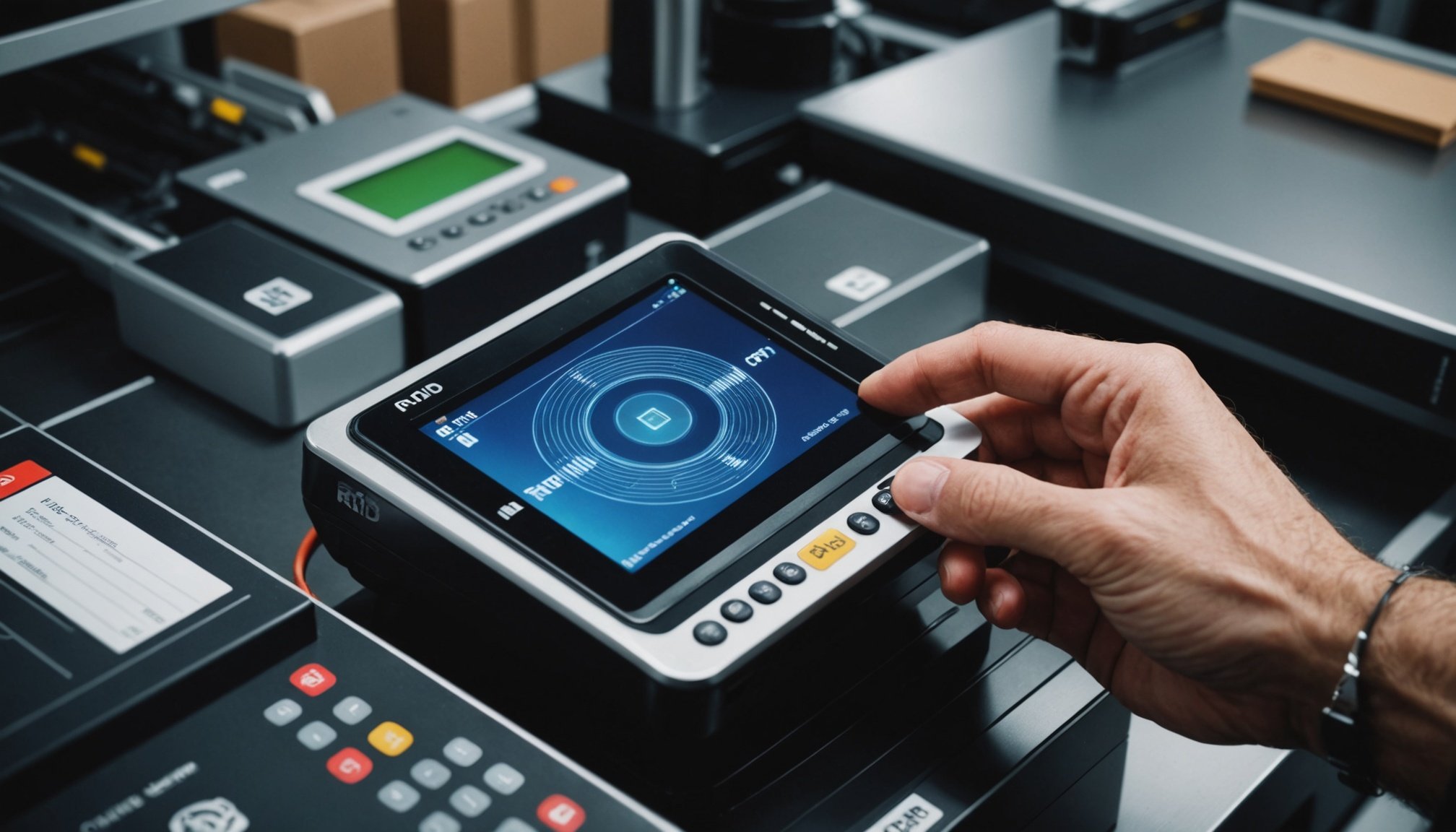What is rfid? exploring its impact on business efficiency

RFID, or Radio Frequency Identification, is transforming how businesses operate, enhancing efficiency and accuracy across various sectors. This technology enables seamless data transfer without the need for direct line-of-sight scanning, revolutionizing inventory management and beyond. Exploring its applications and benefits reveals how RFID not only streamlines operations but also presents a path toward advanced security and real-time data tracking. Discover the potential of RFID and its impact on modern business efficiency.
Understanding RFID Technology
RFID, short for Radio Frequency Identification, is a revolutionary wireless technology that leverages electromagnetic fields to automatically identify and track tags attached to objects. This system typically includes tags, readers which contain antennas, and transceivers. Collectively, these components enable RFID to function effectively as a crucial asset-tracking tool. For businesses looking to optimize their operations, https://www.globalbrandsmagazine.com/rfid-an-essential-for-businesses/ provides an insightful exploration of the essential role RFID plays in modern enterprises.
Cela peut vous intéresser : What Are the Key Considerations for UK Businesses Outsourcing IT Services?
An advantage that sets RFID apart from traditional barcode systems is its capability to scan tags without requiring a direct line of sight. This enables the simultaneous reading of multiple tags and enhances efficiency, particularly in inventory management and logistics. Tags can vary depending on the frequency band they operate within: low frequency, high frequency, and ultra-high frequency, each offering different benefits in terms of reading range and application suitability.
The adoption of RFID technology spans numerous industries, offering unmatched accuracy in data capture and significant reductions in labor costs. While its implementation might seem daunting, the long-term savings and enhanced customer service it provides more than justify the initial investment.
Lire également : How to Implement a Successful Loyalty Program in the UK Retail Sector?
Components of an RFID System
RFID Tags
RFID tags are essential to any RFID system, functioning as data carriers that interact with RFID readers. They consist of a microchip for data storage and an antenna for signal transmission. Tags can be passive, active, or semi-passive. Passive tags lack a power source, drawing energy from the RFID reader's signal and are typically used for cost-effective applications like retail inventory. Active tags, with their own battery, support long-range communication, making them suitable for high-value asset tracking. Semi-passive tags combine characteristics of both, using batteries for circuitry but relying on reader signals for communication.
RFID Readers
RFID readers, also known as interrogators, are devices that communicate with RFID tags to retrieve stored information. They can be fixed installations or handheld devices, depending on the application needs. RFID readers function by emitting a radio frequency signal that powers passive tags and communicates with active ones. Readers are classified into Passive Reader Active Tag (PRAT), Active Reader Passive Tag (ARPT), and Active Reader Active Tag (ARAT) types, providing flexibility for various environments.
RFID Software and Data Processing
The RFID system's backend involves software responsible for processing and interpreting data collected from RFID readers. This software converts raw data into usable formats, integrating it with inventory management and other enterprise systems. Effective data processing enhances operational insights, enabling real-time tracking and automated data collection to improve business efficiency.
Applications and Benefits of RFID Technology
Inventory Management and Asset Tracking
RFID technology revolutionizes inventory management by providing real-time data access and optimization capabilities. This wireless solution allows businesses to track assets with unmatched precision. Unlike traditional barcodes, RFID tags do not require a direct line of sight, enabling the simultaneous reading of multiple items. This enhances efficiency and reduces labor costs significantly. In logistics, RFID systems streamline operations by automating data capture and minimizing human errors in data entry. They foster improved accuracy in stock management, crucial for maintaining optimal inventory levels.
Use in Healthcare and Patient Management
The healthcare sector benefits immensely from RFID's application in patient management. RFID tags are pivotal in tracking medical equipment and medications, ensuring availability and reducing instances of misplaced items. Patient identification becomes more secure, minimizing the risk of error in healthcare delivery. Hospitals leverage RFID to monitor patient movements, improving care efficiency and safety. A notable case at Hull University Teaching Hospital exhibited RFID's ability to save substantial hours for medical staff through enhanced asset tracking, showcasing significant operational efficiencies.
Enhancements in Retail Customer Experience
Retailers harness RFID to enrich the customer experience by optimizing checkout processes and personalizing shopping encounters. RFID tags facilitate swift, self-service checkouts, reducing queue times and elevating customer satisfaction. They also enable precise inventory knowledge, ensuring products are stocked as needed and available for customers. Furthermore, RFID aids in anti-theft operations through enhanced security measures, contributing both to loss prevention and a seamless shopping environment. Deploying RFID in retail translates to improved service quality and customer loyalty.
Challenges and Future of RFID Technology
Privacy and Security Issues
RFID technology presents privacy and security concerns that demand attention. Due to its inherent ability to read data without line of sight, unauthorized scanners can potentially access sensitive information from RFID tags, posing risks of data breaches and unauthorized tracking. Implementing robust encryption methods and secure communication protocols are essential measures to safeguard information.
Implementation Barriers in Different Industries
Adopting RFID is not without its challenges. One significant hurdle is the cost of implementation, including the purchase of tags, readers, and infrastructure upgrades. These initial expenses can be daunting for small businesses despite the long-term savings. Additionally, industries like healthcare and finance face unique obstacles, such as ensuring data accuracy and maintaining consistent regulatory compliance. Effective integration with existing IT systems demands careful planning and expertise.
Future Trends and Innovations in RFID Applications
The future of RFID technology holds promise, particularly through its integration with IoT. This combination can lead to innovative applications, such as real-time asset management and advanced analytics. The development of more robust RFID solutions to address privacy concerns and improve data protection will likely facilitate wider adoption. Emerging trends point toward low-cost tags, improved read ranges, and enhanced smart labels, further solidifying RFID's role in efficient data management across diverse sectors.
